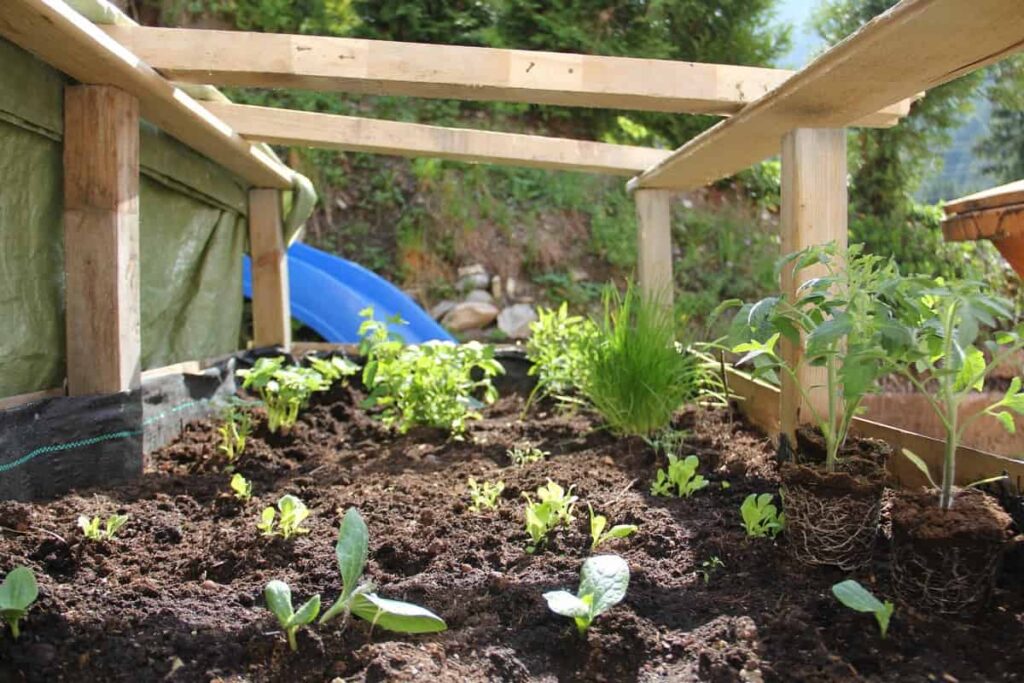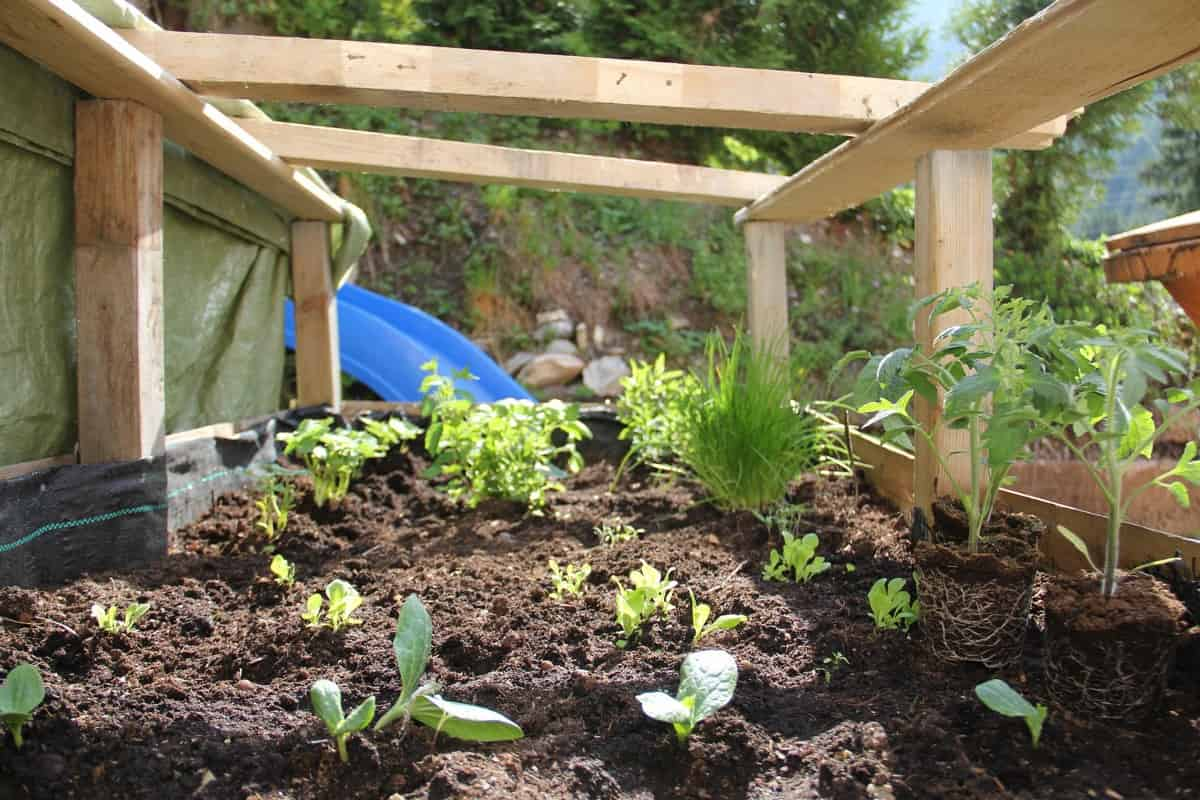
How to Start an Organic Garden in Your Backyard: A Comprehensive Guide
Embarking on the journey of creating an organic garden in your backyard is a rewarding endeavor that connects you with nature, provides fresh produce, and promotes a healthier lifestyle. In an era increasingly concerned with sustainability and food security, the ability to cultivate your own food organically is more valuable than ever. This comprehensive guide will walk you through the essential steps to transform your backyard into a thriving organic garden.
Planning Your Organic Garden
Before you even turn over the soil, careful planning is crucial for success. Consider the following factors:
Assessing Your Backyard
Begin by evaluating your available space. Consider the size, sunlight exposure, and soil type. Most vegetables require at least six hours of direct sunlight per day. Observe your backyard throughout the day to determine which areas receive the most sunlight. Also, note any existing structures, such as trees or fences, that may cast shadows.
Soil Testing
The quality of your soil is paramount for an organic garden. Conduct a soil test to determine its pH level and nutrient content. You can purchase a soil testing kit at most garden centers or send a sample to a local agricultural extension office for professional analysis. Understanding your soil’s composition will help you amend it appropriately to create an optimal growing environment.
Choosing What to Grow
Select plants that are well-suited to your climate and growing conditions. Consider your personal preferences and the needs of your family. Start with easy-to-grow vegetables like lettuce, tomatoes, zucchini, and herbs. Research the specific requirements of each plant, including spacing, watering, and fertilization.
Garden Layout
Plan the layout of your organic garden to maximize space and sunlight exposure. Consider using raised beds, containers, or traditional in-ground planting. Raised beds offer better drainage and soil control, while containers are ideal for small spaces or challenging soil conditions. Group plants with similar needs together to simplify watering and fertilization.
Preparing the Soil for Your Organic Garden
Once you have a plan in place, it’s time to prepare the soil. Organic gardening emphasizes building healthy soil through natural methods.
Removing Existing Vegetation
Clear the area of any existing grass, weeds, or debris. You can remove the vegetation manually or use a method called sheet mulching, which involves layering cardboard and organic matter to smother the weeds and enrich the soil. This method takes time but is an effective organic approach.
Amending the Soil
Based on your soil test results, amend the soil with organic matter such as compost, aged manure, or leaf mold. These materials improve soil structure, drainage, and nutrient content. Incorporate the amendments into the top 6-12 inches of soil using a garden fork or tiller. Aim for a loose, crumbly texture that is easy to work with. This is critical for a successful organic garden.
Creating Raised Beds (Optional)
If you choose to use raised beds, construct them from untreated wood, stone, or recycled materials. Fill the beds with a mixture of topsoil, compost, and other organic amendments. Raised beds provide excellent drainage and allow you to control the soil composition more easily.
Planting Your Organic Garden
With the soil prepared, you’re ready to start planting. Follow these guidelines for successful planting:
Starting Seeds Indoors
For some plants, such as tomatoes, peppers, and eggplants, it’s best to start seeds indoors several weeks before the last expected frost. Use seed-starting trays or pots filled with seed-starting mix. Keep the soil moist and provide adequate light until the seedlings are ready to transplant outdoors. Starting seeds indoors gives you a head start on the growing season and allows you to grow varieties that may not be available as transplants.
Direct Sowing
Other plants, such as lettuce, carrots, and radishes, can be directly sown into the garden. Follow the instructions on the seed packet for proper spacing and planting depth. Keep the soil moist until the seeds germinate. Direct sowing is a simple and cost-effective way to grow many common vegetables.
Transplanting Seedlings
Once the seedlings have developed several sets of true leaves and the weather has warmed up, they can be transplanted into the organic garden. Choose a cloudy day or late afternoon to minimize transplant shock. Dig a hole slightly larger than the root ball, gently remove the seedling from its container, and place it in the hole. Backfill with soil and water thoroughly. Protect the seedlings from pests and extreme weather until they become established.
Maintaining Your Organic Garden
Maintaining an organic garden requires ongoing attention and care. Here are some essential practices:
Watering
Water deeply and regularly, especially during dry periods. Use a soaker hose or drip irrigation system to deliver water directly to the roots of the plants, minimizing water waste and reducing the risk of fungal diseases. Avoid overhead watering, which can encourage the spread of diseases. Monitor the soil moisture regularly and adjust your watering schedule accordingly.
Weeding
Weeds compete with your plants for nutrients, water, and sunlight. Remove weeds regularly by hand or with a hoe. Mulching with organic materials such as straw, wood chips, or shredded leaves can help suppress weed growth and conserve moisture. Regularly tending to your organic garden and removing weeds is key.
Fertilizing
Organic fertilizers provide essential nutrients to your plants without the use of synthetic chemicals. Use compost, aged manure, bone meal, or fish emulsion to fertilize your plants. Follow the instructions on the fertilizer label for proper application rates. Avoid over-fertilizing, which can harm your plants and pollute the environment. Regular soil testing can help you determine the specific nutrient needs of your garden.
Pest and Disease Control
Organic pest and disease control relies on natural methods to protect your plants. Encourage beneficial insects by planting flowers that attract pollinators and predators. Use row covers or netting to protect plants from pests. If necessary, use organic pesticides such as neem oil, insecticidal soap, or Bacillus thuringiensis (Bt). Practice crop rotation and sanitation to prevent the buildup of pests and diseases.
Harvesting Your Organic Garden
Harvesting is the culmination of your efforts. Pick your vegetables when they are ripe and at their peak flavor. Regular harvesting encourages continued production. Store your harvested vegetables properly to maintain their freshness and quality. Share your bounty with friends and neighbors to spread the joy of organic gardening.
Extending the Growing Season
With a little planning, you can extend the growing season and enjoy fresh produce for a longer period. Here are some techniques to consider:
Cold Frames and Greenhouses
Cold frames and greenhouses provide protection from frost and allow you to start plants earlier in the spring and extend the harvest later in the fall. These structures trap solar heat and create a warmer microclimate for your plants. Choose a location that receives plenty of sunlight and is sheltered from the wind. A cold frame is a simple, unheated structure, while a greenhouse is a more elaborate, heated structure.
Row Covers
Row covers are lightweight fabric covers that protect plants from frost, pests, and wind. They can be used to extend the growing season by several weeks. Simply drape the row covers over your plants and secure them with stakes or weights. Row covers are an inexpensive and effective way to protect your organic garden.
Succession Planting
Succession planting involves planting crops at intervals to ensure a continuous harvest throughout the growing season. Plant a new batch of lettuce or radishes every few weeks to keep a steady supply coming. Succession planting maximizes your yields and ensures that you always have fresh produce available.
The Benefits of Organic Gardening
Starting an organic garden in your backyard offers numerous benefits, including:
- Healthier Food: Organic produce is free from synthetic pesticides, herbicides, and fertilizers, making it a healthier choice for you and your family.
- Environmental Sustainability: Organic gardening practices promote soil health, conserve water, and reduce pollution.
- Cost Savings: Growing your own food can save you money on groceries, especially if you focus on high-value crops.
- Connection with Nature: Gardening provides a therapeutic connection with nature, reducing stress and improving mental well-being.
- Educational Opportunity: Gardening is a great way to learn about plants, ecology, and sustainable living.
Embarking on the journey of creating an organic garden is a fulfilling experience that offers numerous benefits for your health, the environment, and your well-being. By following these steps and embracing organic gardening practices, you can transform your backyard into a thriving oasis of fresh produce and natural beauty. Remember to adapt these guidelines to your specific circumstances and enjoy the process of learning and growing along the way. Happy gardening!
[See also: Composting for Beginners: A Step-by-Step Guide]
[See also: Natural Pest Control Methods for Your Garden]

